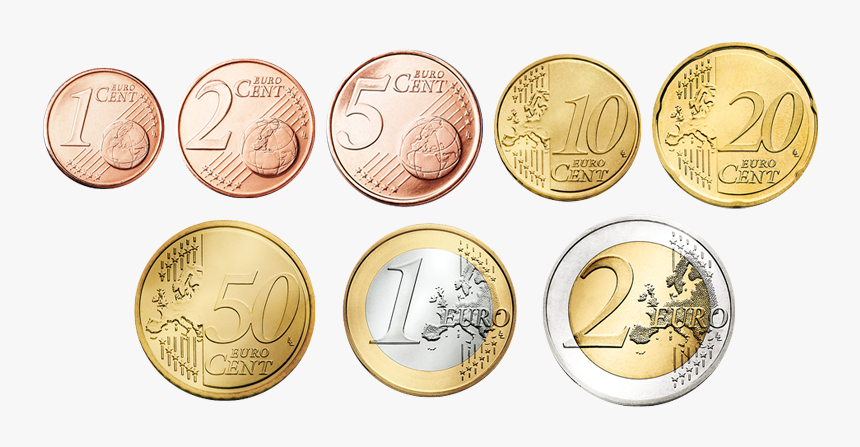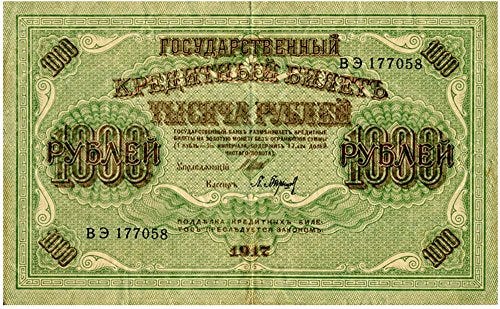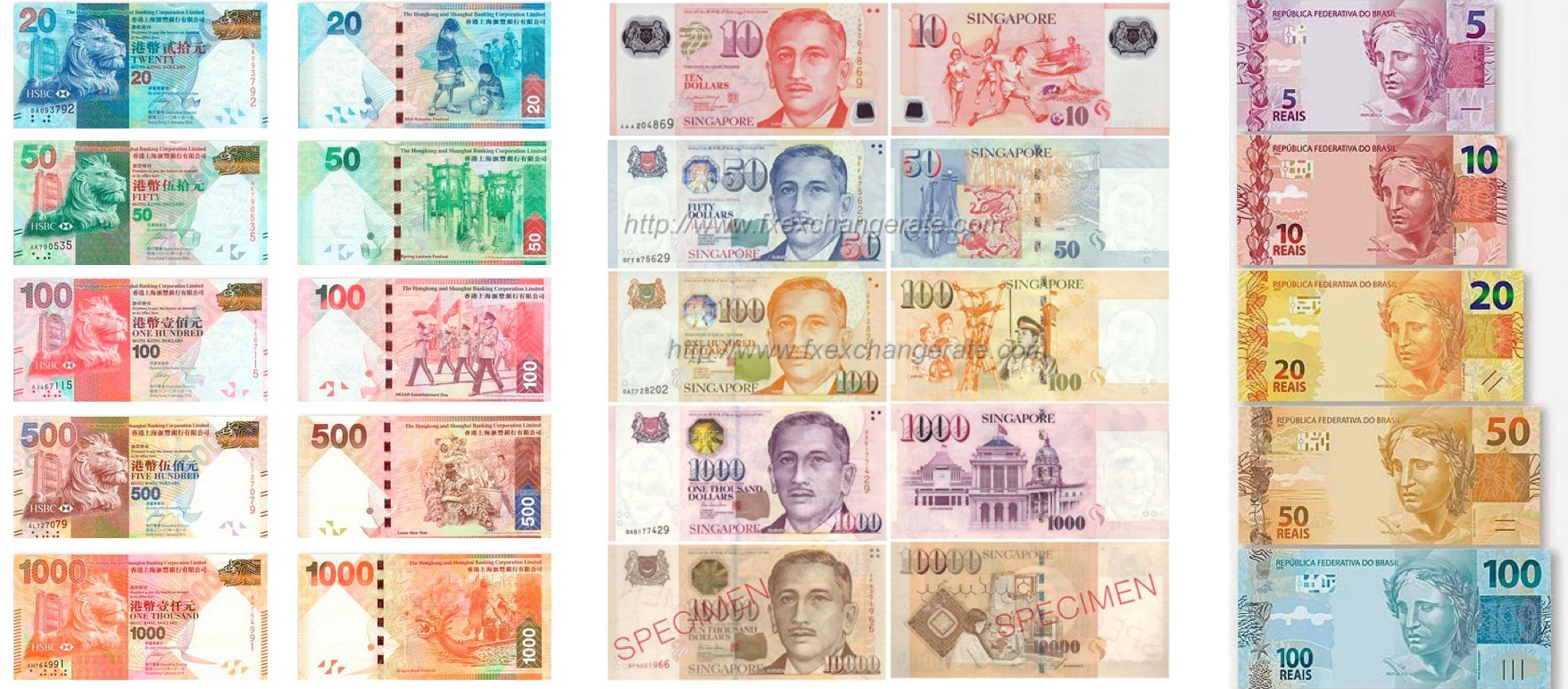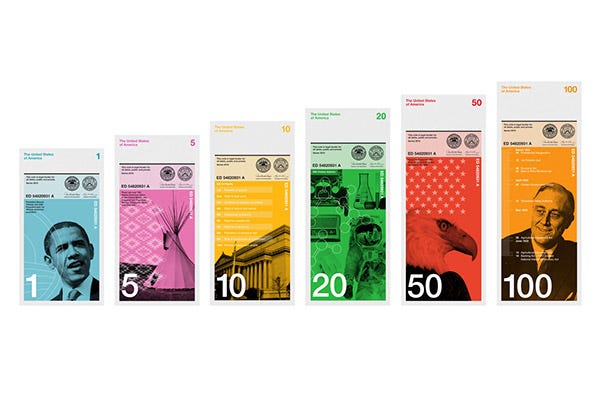硬幣 假硬幣 天平
During the last 1,5 years, I’ve been traveling a lot. Apart from my must-have things like laptop, sketchbook, and power bank, there constantly appears a new one, in a familiar shape but a new look. That’s
在過去的1.5年中,我經常旅行。 除了筆記本電腦,寫生簿和移動電源之類的必備物品外,還不斷出現一種新的形狀,形狀熟悉但外觀新穎。 那是
the currency—the banknotes and coins of the new country.貨幣 -新國家的紙幣和硬幣。Of course, that’s not a case when I’m in Sweden as they’re moving to cash-free reality and, even more, it can be a challenge for you to find a place that accepts cash for payment, at least, in Stockholm.
當然,當我在瑞典,因為他們正轉向無現金現實時,情況并非如此,而且,對于您來說,至少在斯德哥爾摩,找到一個接受現金付款的地方可能對您構成挑戰。 。
On the contrary, when I was in German cities, some places accepted only cash which, to be honest, surprised me. So anyway, moving or not to a cash-free society, this essential element of our life will follow us for a long time.
相反,當我在德國城市時,有些地方只接受現金,說實話,這使我感到驚訝。 因此,無論是否遷移到無現金社會,我們生活中的這一基本要素將長期存在。
And so, I decided to analyze the design of that banknotes and coins I had a chance to discover during my trips. What are the universal rules, if there are some. How easily did I recognize the new banknote and was able to pay the required cost quickly? Are there any principles we can learn from the oldest form of payment, coins?
因此,我決定分析旅行中有機會發現的那些鈔票和硬幣的設計。 通用規則是什么(如果有)。 我如何輕松識別新鈔票并能夠快速支付所需費用? 有沒有我們可以從支付, 硬幣的最古老的形式學習任何原則是什么?
小東西叫硬幣 (That little thing called a coin)

歐元 (Euro)
As a tourist, I’m most familiar with the euro currency. So are 340 million people who use it on a daily basis, making it the second most-used currency worldwide.
作為游客,我最熟悉歐元。 每天有3.4億人在使用它,這使它成為全球第二大使用貨幣。

It’s easy to notice that the hierarchy of cents and euros is based on 3 main elements:
容易注意到,美分和歐元的層次結構基于3個主要元素:
Color
顏色
Size and weight
尺寸和重量
Detalization
毀滅性
A simplified image would look like this.
簡化的圖像看起來像這樣。

3 bronze coins, 3 golden, and 2 golden-silver ones. While some of these coins look like they have the same or similar size, like 2 and 10, 5 and 20, their weight still varies.
3枚銅幣,3枚金幣和2枚金銀幣。 盡管其中一些硬幣看起來大小相同或相似, 例如2和10、5和20 ,但它們的重量仍在變化。
Each group has its own type of engraved image on the reverse (tail) side. Moreover, it worth noticing that the edge of each coin (except for 1, 2, and 5) has various tactile qualities. These two factors make euro coins accessible—they can be used by people with a variety of disabilities.
每個組的背面(尾部)都有自己的雕刻圖像類型。 而且,值得注意的是,每個硬幣的邊緣(1、2和5除外)具有各種觸覺質量 。 這兩個因素使歐元硬幣易于使用 -各種殘障人士都可以使用它們。
Such point is useful to note for each UX/UI designer—remember about the accessibility.
對于每個UX / UI設計人員來說,記住這一點很有用-記住可訪問性。
Tactile qualities make euro coins accessible so that they can be used by people with a variety of disabilities.
觸覺質量使歐元硬幣易于使用,因此各種殘障人士都可以使用它們。
The same color division can be seen in other traditional things like Olympic medals.
在其他傳統事物(例如奧運會獎牌)中可以看到相同的顏色區分。

Initially being based on the rarety of gold, silver, copper (bronze) metals the classical order of Olympic medals appeared.
最初基于稀有的金,銀,銅(青銅)金屬,出現了奧運會獎牌的經典順序。
Euro coins in its design seem to be quite standard and so I wasn’t surprised when I saw such currencies:
歐元硬幣的設計似乎很標準,因此當我看到這樣的貨幣時,我并不感到驚訝:
巴西雷亞爾 (Brazilian real)

While most of the coins have the same reverse side composition (except for the number), their difference is based on color and detalization (1 real).
盡管大多數硬幣的背面成分相同(數字除外) ,但它們的區別基于顏色和深度(1實數)。
新加坡元 (Singapore dollar)

Only two colors, silver and gold, and the same approach of having the most valuable coin in a row—1 dollar—to be made of two metals.
只有兩種顏色,銀和金,以及用兩種金屬制成連續一枚最有價值的硬幣(1美元)的相同方法。
形狀特征 (Shape features)

Another option of how to reach the accessibility of the coins is to play with the form.
如何到達硬幣的可訪問性的另一種選擇是使用表格。
While the circle is the most common and obvious coin figure, some variations may apply, such as a wave-like edge as in Hong Kong coins or a hole in Danish krone.
雖然圓圈是最常見和最明顯的硬幣形狀,但可能會出現一些變化,例如像香港硬幣那樣的波浪形邊緣或丹麥克朗的Kong。


A note for a designer:
設計師注意事項:
even if you’re limited in your choice, small changes can make a design look and feel different.
即使您的選擇有限,微小的更改也會使設計的外觀和風格有所不同。
Another note on UX: Danish krone coins for sure look beautiful (they even have hearts!) and sophisticated but from the usability point, the numbers on most of them are very small. And so, the person who’s using them for the first time (like me) can be a bit confused.
關于UX的另一個注意事項:丹麥克朗硬幣肯定看起來很漂亮(它們甚至有心!),而且精致,但是從可用性的角度來看,大多數硬幣的數量都很少。 因此,第一次使用它們的人(如我)可能會有些困惑。
And while I’m criticizing designers from the Kingdom of Denmark, I might note what’s happening in my own country Ukraine, especially since we’re facing the updates of currency design at the moment.
當我批評丹麥王國的設計師時,我可能會注意到我自己的國家烏克蘭正在發生的事情,特別是因為我們目前正面臨貨幣設計的更新。
烏克蘭格里夫納匯率 (Ukrainian hryvnia)
Here are the new coins. Some of them like 1 and 2 hryvnias are already widely in use. At first sight, they all look decent, then why I’m judging this update? (like thousands of other Ukrainians)
這是新硬幣。 其中一些像1和2格里夫納匯率已經廣泛使用。 乍一看,它們看起來都很不錯,那為什么我要判斷此更新呢? (像成千上萬的烏克蘭人一樣)

The answer is simple—take a look at other old-style coins that are still in use.
答案很簡單-查看仍在使用的其他老式硬幣。

Even though the smallest pennies like 1, 2, 5 are in the process of being withdrawn from use lately, the shapes and sizes(!) of the new hryvnias coins are very similar to pennies. That’s the huge UX fail, I believe.
即使最近最小的1、2、5美分硬幣都已停產,新格里夫納匯率硬幣的形狀和大小(!)與美分硬幣非常相似。 我相信,那是巨大的用戶體驗失敗。
Another inconsistency is that there is an old-style big golden 1 hryvnia coin and the same amount is now presented in a small silver coin.
另一個不一致之處是,有一個老式的大金1格里夫納匯率硬幣,現在以小銀幣形式提供了相同金額。
A note for a designer: while working on the renovation and updates think about a transition period and all kinds of people who will use your end product. In the case of the national currency, the target audience is the most extensive—all citizens. Elderly people or people with eye disability shouldn’t be forgotten.
設計師注意事項:在進行翻新和更新時,請考慮過渡期以及將使用您最終產品的所有人員。 就本國貨幣而言,目標受眾是最廣泛的受眾—所有公民。 不應忘記老年人或有視力障礙的人。
讓我們添加一些顏色和價值:鈔票 (Let’s add some color and value: the banknotes)

尺寸 (Size)
Have you ever thought about the size of the banknotes we have right now? We do not even consider that it’s convenient but it wasn’t like that always.
您是否考慮過我們現在擁有的紙幣大小? 我們甚至不認為這很方便,但并非總是如此。
For instance, 1000 rubles 1917 year had almost A5 paper size.
例如,1000盧布(1917年)的紙張尺寸幾乎為A5。

顏色 (Color)
One of the most beautiful banknotes, as I believe, is the Swiss franc. Why? Because of significant color usage.
我相信,最美麗的鈔票之一是瑞士法郎 。 為什么? 由于大量使用顏色。

These banknotes are saturated, have a contrast thanks to complementary colors (as you can see from the color spectrum I added on the picture) and are easily distinguished one from another.
這些鈔票是飽和的,由于具有互補色而具有對比度(如您從我在照片上添加的色譜圖中所看到的) ,并且易于區分。
No surprise they are on point. Switzerland is a very design-friendly country. It’s the homeland of Helvetica and the most minimalistic “huge plus” red flag. Period.
不足為奇。 瑞士是一個設計友好的國家。 這是赫爾維蒂卡(Helvetica)的故鄉,也是最簡約的“巨大”紅旗。 期。
And while the color contrast is the most common and widely used approach, in some cases color adds misunderstanding.
雖然顏色對比是最常見且使用最廣泛的方法,但在某些情況下,顏色會增加誤解。
越南盾案 (Vietnam dong case)

Recently I visited Vietnam for the first time. I was fascinated with the beauty of this country, a different culture, and well, the fact that everyone is a millionaire there too. There are lots of zeros on every banknote and that’s already a challenge.
最近,我第一次去越南。 我與這個國家的美麗,不同的文化,和好 ,其實,每個人都是百萬富翁有太多著迷。 每張鈔票上都有很多零,這已經是一個挑戰。
Even more, though the color spectrum of Vietnamese banknotes altogether looks calm and nice, as it’s the combination of pastel color background and intense graphics on top, the color range is limited and there’s not a big distinction between them.
更重要的是,盡管越南鈔票的色譜看上去完全平靜而優美,但由于 它是柔和的顏色背景和頂部的強烈圖形的結合 , 因此顏色范圍有限,而且兩者之間沒有太大區別。
As a result, that’s a common tourist trap, especially when you have to pay quickly. It’s easy to get lost in all zeros and, at least, mix up 10000 with 200000 (because their general color palettes are very similar).
因此,這是一個常見的旅游陷阱,尤其是當您必須快速付款時。 很容易迷失全零,并且至少將10000與200000混合在一起(因為它們的常規調色板非常相似)。
A note for a designer: color contrast can’t be underrated. Put your designs in a row and check whether each of them is well distinguished from the surrounding.
設計師注意事項:色彩對比不可低估。 將您的設計排成一排,并檢查每個設計是否與周圍環境區分開。
一致性 (Consistency)
That’s what I’ve noticed in Singapore, Thailand, Hong Kong, Brazil, and Vietnam—the image on the face side of these banknotes is… the same.
這就是我在新加坡,泰國,香港,巴西和越南注意到的-這些鈔票正面的圖像是……相同。

There’s the key symbol of the country (lion for Hong Kong), the first President (Singapore), a national personification or a symbol of a Head of republic (Brazil).
這里有國家的主要標志(香港的獅子) ,第一任總統(新加坡) ,國家化身或共和國首腦(巴西)的標志。
While having a famous persona on the reverse side of the banknote is a common solution, it would be interesting to mention the idea behind the redesign of the Swiss franc you’ve seen earlier in the article. Here’s the quote from the official website: “With the ninth banknote series the Swiss National Bank broke new ground on the design front — moving away from the depiction of well-known personalities… Each characteristic is communicated via an action, a Swiss location and various graphic elements.”
雖然在鈔票的背面有一個著名的角色是一個常見的解決方案,但有趣的是要提到重新設計瑞士法郎背后的想法,就像您在本文前面看到的那樣。 以下是官方網站的引文: “瑞士國家銀行采用第九個鈔票系列,在設計方面開辟了新天地–擺脫了對知名人物的描述……每個特征都通過一個動作,一個瑞士所在地和各種方式進行傳達。圖形元素。”
Or it can be a combination of famous people from one side and national animals as heroes like in Argentinian peso. I personally love this approach.
或者它可以是一方面是著名人物,又是阿根廷比索英雄的民族動物。 我個人喜歡這種方法。


Another quite artistic approach is to dedicate all sides to nature, as you can see in the Faroe Islands krone. It looks extremely sophisticated and relevant to a country where there are more sheep than… citizens.
如法羅群島克朗所見,另一種頗具藝術性的方法是將自然的各個方面都奉獻給人們。 它看起來非常復雜,并且與一個綿羊比……多的國家息息相關。
To conclude the banknote section, the key factors to distinguish the series are:
總結鈔票部分,區分系列的關鍵因素是:
- High contrast 高對比度
- Wide color range 色彩范圍廣
- Small size variation (optional) 小尺寸變化(可選)
And I would add, creativity.
我還要補充一下創造力 。
未來貨幣會是什么樣子? (How future currencies can look like?)


Even such old-fashioned, traditional things as banknotes and coins, do have changes and transformations through time. And that’s definitely the field for design experiments. Here are some of my personal predictions.
即使是像鈔票和硬幣這樣的老式傳統物品,也會隨著時間的流逝而發生變化。 這絕對是設計實驗的領域。 這是我的一些個人預測。
縱向 (Portrait orientation)

Nowadays we all have smartphones and reading the information in portrait orientation is more frequent and usual. Can’t it be the reason more currencies redesign switch to the vertical composition?
如今,我們所有人都擁有智能手機,并且以縱向讀取信息的頻率越來越高。 難道不是更多的貨幣重新設計轉向垂直結構的原因嗎?
動植物而不是個性 (Flora and fauna instead of personalities)
Cause they deserve it. It’ll be also an everyday reminder for every one of us to protect animals and nature.
因為他們應得的。 這也將每天提醒我們所有人保護動物和自然。
抽象主義 (Abstract art)
Following simplification, the main pictures on banknotes may even become an abstract form where color, shape, and texture will play a distinctive role.
經過簡化,鈔票上的主要圖片甚至可能變成抽象形式,其中顏色,形狀和紋理將發揮獨特的作用。
通用貨幣? (Universal currency?)
I’m not an expert in the economy but the universal currency does pop up in mind as an option thinking about the concepts. At least, it’s interesting to dream about such world following a style of John Lennon’s Imagine song.
我不是經濟專家,但是考慮到這些概念時,會突然想到使用通用貨幣。 至少,按照約翰·列儂(John Lennon)的《想像》(Imagine)歌曲的風格夢到這樣的世界很有趣。
The thing I do know that in this case, the competition between designers to create such currency would be HUGE! And that would be fun, right?
我確實知道,在這種情況下,設計師之間創造這種貨幣的競爭將非常巨大! 那會很有趣,對嗎?
I love writing about design, travel, new cultures and everything related. As you’re reading these lines right now you might have read the full article, so here are some of my previous stories that can be interesting to you to continue reading:
我喜歡寫有關設計,旅行,新文化和所有相關內容的文章。 當您現在閱讀這些行時,您可能已經閱讀了整篇文章,因此,以下是我以前的一些故事,您可能會繼續讀下去它們很有趣:
The value of the city branding
城市品牌價值
Cultural specifics — how do they influence on design and user experience?
文化特征-它們如何影響設計和用戶體驗?
Part 1 (Singapore, Thailand Bangkok)
第1部分 (新加坡,泰國曼谷)
Part 2 (Thailand Phuket, Hong Kong)
第2部分 (泰國普吉島)
Fly Me to the Faroe Islands: the land of wonder and trust
帶我飛到法羅群島:神奇與信任的土地
Meet His Majesty, the Color (color study)
迎接the下,色彩 (色彩研究)
Thanks for reading!
謝謝閱讀!
翻譯自: https://uxdesign.cc/ux-ui-analysis-of-currency-design-fce69fc569f8
硬幣 假硬幣 天平
本文來自互聯網用戶投稿,該文觀點僅代表作者本人,不代表本站立場。本站僅提供信息存儲空間服務,不擁有所有權,不承擔相關法律責任。 如若轉載,請注明出處:http://www.pswp.cn/news/275562.shtml 繁體地址,請注明出處:http://hk.pswp.cn/news/275562.shtml 英文地址,請注明出處:http://en.pswp.cn/news/275562.shtml
如若內容造成侵權/違法違規/事實不符,請聯系多彩編程網進行投訴反饋email:809451989@qq.com,一經查實,立即刪除!的使用...)




——文件操作隱寫、圖片隱寫)





 DSA-4411-1 firefox-esr security update)







